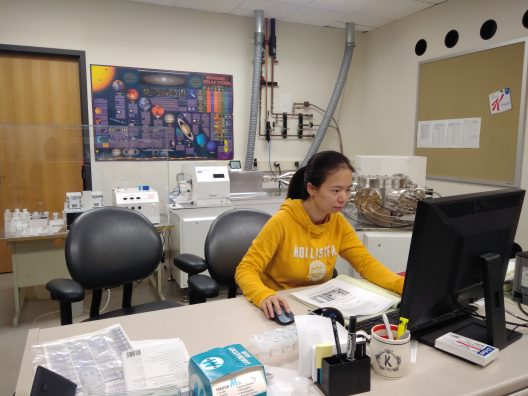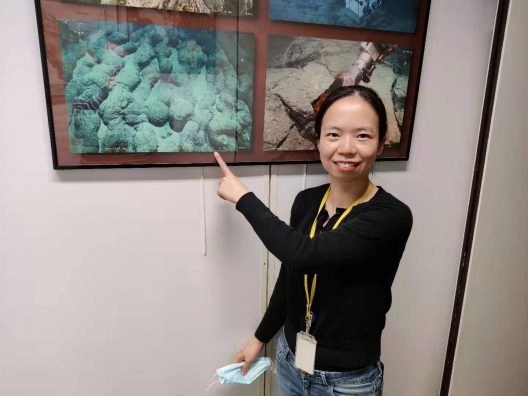When looking at a periodic table, potassium might not be the first element you’re drawn to – distracted instead by gold, copper or silver. But a new paper published in Science Advances suggests we should be paying more attention to this abundant substance.
The study – with first author Yan Hu, a recent graduate student and postdoctoral researcher in the UW Department of Earth and Space Sciences and now at Institut de Physique du Globe de Paris – advances our ability to trace potassium isotopes at high precision, unleashing a suite of potential applications ranging from measuring past climates to further understanding ocean chemistry.

Being able to precisely trace potassium is important because it can tell us the rate at which minerals move from land via runoff into the ocean, where the minerals become incorporated into crust and sediment on the seafloor. Over time, plate tectonics alter seafloor crusts and sediments at subduction zones. The stable potassium isotopes — potassium that differs in the number of neutrons — can be either light or heavy and accordingly break down differently. When substances change states, such as transitioning from a liquid to a solid, the ratio of light and heavy isotopes of potassium changes because lighter isotopes have faster reaction rates. By piecing these complicated processes together, scientists can look at and classify the specific potassium isotope signature in samples of oceanic crust and subducting sediments from major subduction zones, helping them tell the story of geologic and atmospheric change through time more precisely.
This is something that’s been difficult for scientists to do in the past. Prior to Hu’s work, which has spanned multiple years and publications, researchers lacked the analytical precision to differentiate potassium isotope variations. Co-corresponding author Fang-Zhen Teng, a UW professor in earth and space sciences, describes the long-standing inability to measure potassium isotopes with fine precision as “a first-order problem.”
“This work is the first thing our community needed to do in order to use potassium isotopes as a tracer, and potassium is also one of the most important elements in major reservoirs we have to characterize,” Teng said.
UW’s Non-Traditional Isotope Laboratory is one of only a handful of labs in the world with the equipment to carry out this work, and developing the methods to conduct potassium isotope analysis at such high level of detail was no small feat.
“We were aiming to achieve an unprecedented level of precision, which required many weeks of trying and tuning,” Teng said. “Hu’s paper in 2018 was the first study of high-precision potassium isotopes, and since then she’s been working very hard in the lab to refine this method and apply it to solve major geological processes.”

When asked by peers how the team was able to achieve such high precision, he replies, “They need a student like Hu to do that.”
Future work could use potassium isotopes to understand how the atmosphere, ocean and seafloor have changed with the movement of continents throughout Earth’s history.
“The idea is we can measure the potassium isotopic concentration of seawater through time,” says Hu. “We can measure the isotopic concentration of, for example, halite, or rock salt, through geologic time and the isotopic composition will be a balance between inputs from continental weathering [via inflow from rivers] and seafloor alteration.”
Salts like halite, carbonate or silicate form from the ocean and are mixed together with other minerals in rocks.
“We have ancient rock samples, but lack ocean samples that are thousands of years old. Salts allow us to deduce ancient ocean chemistry indirectly, and we have to evaluate which will best represent the ocean chemistry in deep time,” Teng said.
By constraining ocean chemistry in ancient times through sediment analysis, the researchers hope to estimate continental weathering, the process through which landforms erode over time. This could also provide a new tool to study past atmospheres.
“Marine sediments likely won’t affect ocean composition over shorter periods of time, but continental weathering can,” Teng notes. “Continental weathering is strongly influenced by carbon dioxide, which provides a measure of atmospheric conditions.”
An additional study by the same authors, using potassium isotopes to trace crust-mantle recycling at subduction zones, was also published recently in Geochimica et Cosmochimica Acta.

